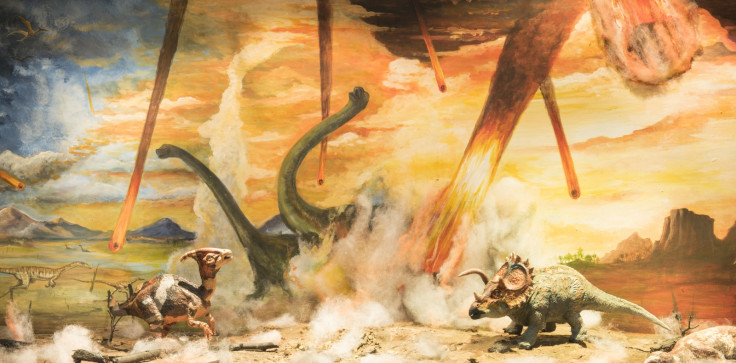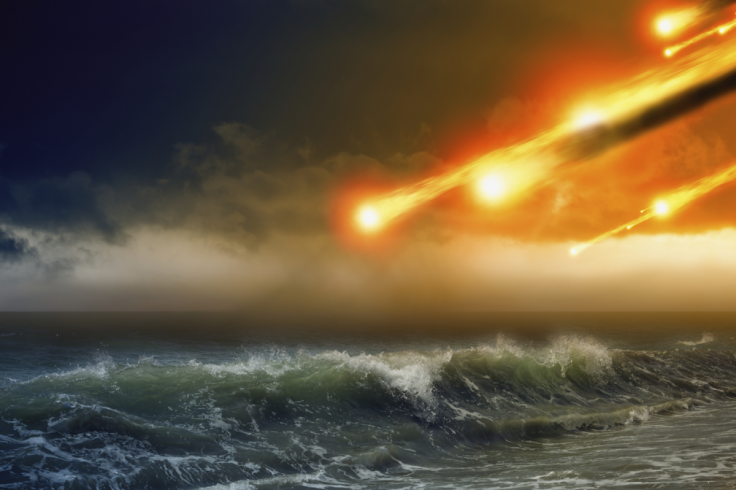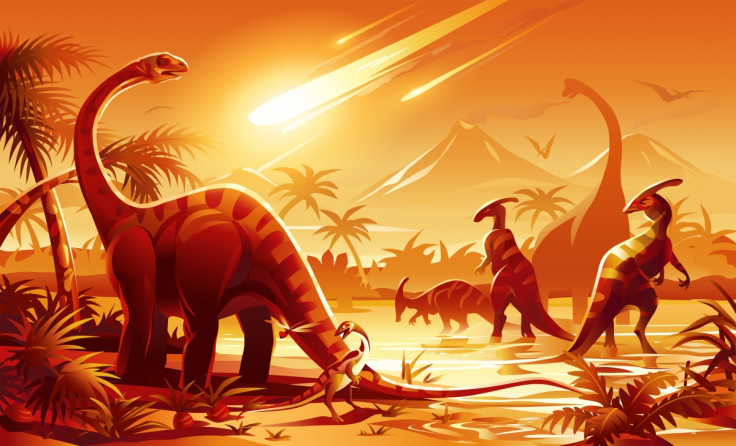Asteroid that killed the dinosaurs made the biggest climate impact ever
It went dark for at least two years after the asteroid hit 66 million years ago.
Wildfires that spread after the impact of the asteroid that killed the dinosaurs released 15 billion tonnes of soot into the atmosphere. Scientists have now modelled what happened to this soot and calculated how it killed 75% of life on the planet at the end of the Cretaceous.
About 66 million years ago, a 10km-wide asteroid collided with Earth, hitting the Yucatán Peninsula. It created the Chicxulub crater, which measures 180km across and20 km deep.
It wasn't the initial impact that had such a devastating effect on life. Of course, this was brutal in the immediate area of the crater where any living thing was vaporised. Around the world too there were massive earthquakes, tsunamis and a broiling sea.
But it was what happened next in the years after the collision that was particularly deadly, according to a detailed computer modelling study published in the journal PNAS.
"The extinction of many of the large animals on land could have been caused by the immediate aftermath of the impact, but animals that lived in the oceans or those that could burrow underground or slip underwater temporarily could have survived," said study author Charles Bardeen of the National Center for Atmospheric Research in a statement.
The asteroid hit so hard that a great quantity of rock was vaporised, being sent up into the atmosphere in a form called 'sphericules'. These sphericules would have returned to Earth still burning hot, triggering wildfires on a global scale.
The soot from these fires was injected high into the stratosphere, turning the sky black and blocking out the majority of the sunlight. This blanket covered the whole world for several years, killing plants no longer able to photosynthesise, as well as the animals that fed on them.
"At first it would have been about as dark as a moonlit night," said Owen Toon of the University of Colorado, Boulder, also a study author.
Just a third of the amount of soot that the asteroid threw into the atmosphere could have blocked photosynthesis for about a year, the researchers find. As it was, the continents cooled by as much as 28C and the oceans cooled by up to 11C.

While temperatures at the surface fell, in the blackened atmosphere temperatures soared as the soot absorbed the sun's heat. In the stratosphere temperatures rose by up to 200C.
This heat caused the ozone layer to begin to break down, allowing large amounts of water vapour to be stored in the upper atmosphere. This water then reacted to lead to the creation of hydrogen compounds that further destroyed ozone.
Eventually, the water also helped to wash some of the soot out of the atmosphere. This happened relatively abruptly, the study found. After several years of darkness, the soot was gone in a matter of months after it first started dissipating.
As soot began to be removed, the air in the upper atmosphere cooled. This led to the formation of ice crystals, which washed yet more soot out of the atmosphere, cooling the air and forming more ice, and so on until there was no soot left.

The fact that the impact of the asteroid that killed the dinosaurs is still being debated after 35 years of intensive study shows what a complex problem it poses. This idea of a nuclear-winter style cooling event due to soot has come in and out of favour since it was first suggested in 1980.
"For quite a long time the hypothesis of 'nuclear winter' prevailed in scientific community. It was dismissed when scientists realised that large dust partilcles cannot stay in atmosphere for a long time to cause global cooling," Natalia Artemieva of the Planetary Science Institute in Arizona, who was not involved in the research, told IBTimes UK.
The present paper brings this hypothesis back to the table thanks to sophisticated computer modelling. It assumes that most of the soot was made up of very small particles of less, that they were ejected quickly after the initial impact and that they made it all the way up to the stratosphere.
While this might not be the end of the story, it will at least stimulate further debate in the field, Artemieva said.
"The authors have revived the nuclear winter hypothesis on much sophisticated level than 35 years ago," she concluded.

© Copyright IBTimes 2024. All rights reserved.






